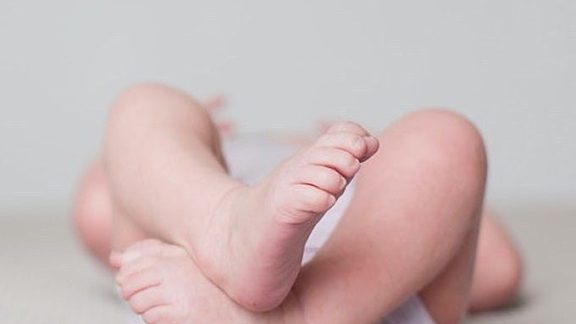Four factors that may influence your decision are cost, convenience, comfort and care of the earth. So much has changed since the days when women spent countless hours washing, drying and ironing cloth nappies! Today, we're spoilt for choice in terms of the range of styles available in cloth nappies, disposable nappies and biodegradable nappies.
One of the biggest decisions you'll make as a new parent is what nappy to use for your bub. Some children don't potty train till they're about three, so that's plenty of nappies to think about!
When it comes down to what to put on your precious baby's bum, the question essentially boils down to...cloth nappy or disposable nappies?
Weighing up cloth nappies and disposable nappies
- Cost: be prepared to cough up more upfront for cloth nappies, but they'll pay for themselves over time.
- Convenience: disposable nappies or biodegradable nappies can be much easier if you're travelling, or out and about. Or get the best of both worlds by using cloth at home and disposables when you're out.
- Comfort: a baby's skin is so sensitive. It's natural you'll want to use the best-fitting, most absorbent nappy for your little one.
- Care for the earth: it's easy to buy into the belief that the cloth nappy is more environmentally friendly as it doesn't end up in landfill. However, bear in mind doing those loads of washing does consume energy and water. On the other hand, disposable nappies can be partly 'offset' by buying biodegradable and local brands.
An A-Z on cloth nappies
Back in the day, cloth nappies were all about old-fashioned terry towelling nappies (which still happen to the most cost effective option to this day).
But the modern cloth nappy has evolved to include a water resistant cover, leak-proof elasticised holes, and absorbent padding and liners.
For a newborn, you'll potentially have 10-12 nappy changes a day, so it's worth having 20-24 on hand. We'd suggest experimenting before you buy through a trial pack, hiring from a 'nappy library', or borrowing from friends or family.
Tell me more about modern cloth nappies?
Welcome to the intriguing world of modern cloth nappies:
All in One: these have a moisture resistant outer layer sewn together with an absorbent inner to form a nappy.
All in Twos: also called 'snap-in-ones', this style has a waterproof outer layer with absorbent inner layers that 'snap' in with press studs. They can be taken apart for washing and dry relatively quickly.
Pocket nappies: these have a waterproof outer layer sewn together with a soft inner lining, which forms the shell. Between these two layers there is a pocket for absorbent inserts. These are easily removed for washing and replaced.
Pros and cons of using cloth nappies
Just as in life, there are ups and downs to everything! Here are some of the pros and cons of cloth nappies:
Natural fabrics take longer to dry than synthetics – so keep that in mind for rainy days (unless you have a dryer or use a nappy washing service).
While the initial investment can feel painful for your hip pocket, cloth nappies are cheaper in the long run, plus they can be handed down as your family grows!
Cloth nappies are ultimately better for the environment, despite the laundry costs (and the time spent doing the washing. It is a commitment).
As we've said before, they're not as convenient if you're travelling or out of the house.
Cloth nappies are made from natural materials such as hemp or cotton, so are free from strong chemicals and toxins. Also, a snug fit can means less rubbing or chaffing.
Pros and cons of using disposable nappies:
Did you know that Britain's Valerie Hunter Gordon – a busy mum – invented the world's first disposable nappy in 1947? Believe it not, she originally used old nylon parachutes left over from the Second World War!
Today, mothers all over the world can breathe a sigh of relief that these nifty inventions exist. Disposable nappies are quick and easy to use, moisture absorbent (no leaks), and great to use when you're on the move.
However, disposable nappies are single use, and take several hundred years to decompose when in landfill.
If you're concerned about the environmental impact, you can opt for biodegradable nappies instead. Made from bamboo and organic fabrics, these are generally more expensive than the general disposable, but the trade off is greater peace of mind.
The last word on biodegradable nappies – there's no washing or drying involved.
Which nappy is best for me?
Ultimately, the decision is yours. There's no right and wrong, and what works better at one point might change in the next. Shop around or use a combination of cloth nappies and disposable nappies if that works better for you and your baby.
Baobag's top nappy picks for 2020
We're privileged to work with so many outstanding brands and baby love businesses. Here are some of our absolute faves:
Modern cloth nappies
Disposable nappies
Biodegradable nappies



